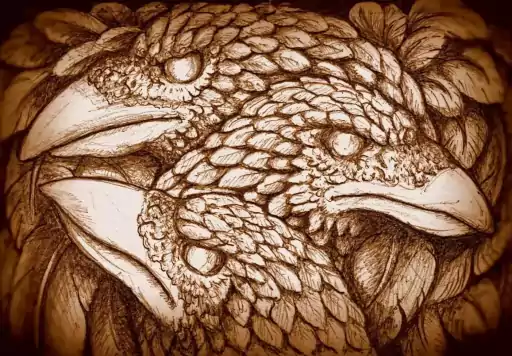WHY UPPER-WORLD?
In shamanic journeying, it is common to experience shamanic reality as being divided into three distinct realms. These are sometimes referred to as the Upper-World, the middle-world, and the Lower-World. This is because, when we do shamanic journeys, we usually experience the realms as being organised spatially, with the Upper-World above us, the Lower-World below us, and the middle-world being the everyday world that we live in (and sometimes more besides).
The three realms are quite distinct. Each has its own unique qualities, feel, and “inhabitants.” Consequently, each realm requires a different set of skills from the journeyer, along with a different awareness and approach.

SEEING THE UPPER-WORLD THROUGH HUMAN EYES
THE SYMBOLISM WE BRING
In terms of what the Upper-World looks like, it is important to bear in mind that, in its raw form, shamanic reality is as strange a place as the quantum realm. Our human brains are simply not equipped to perceive, understand, and process it as it “really” is. So, to make any kind of sense of it, we have to fashion what is there into imagery, symbols, and metaphors that we can relate to. In his second book, Cave and Cosmos, the anthropologist and founder of Core Shamanism, Michael Harner, says that:
Although people experience the same themes in the Upper-World, they clothe their experience in different images.
Given this, if you are from a Christian background, you might experience the Upper-World as being full of monks and nuns, saints, angels of various kinds and, at the top, the Holy Trinity. As a Hindu, you may experience it as filled with Hindu gods and goddesses — Lord Shiva, Vishnu, Krishna, Ganesh, Parvati, Durga, and so on. A Buddhist may experience it as full of Buddhas, Bodhisattvas, Taras, and other deities. Similarly, in his research, Harner found that, in doing Upper-World journeys, secular people often experienced meeting figures such as Mandela, Gandhi, philosophers, poets, and others. The point being that what we experience in the Upper-World is very much shaped by the kinds of symbolism, imagery, and cosmology that we are familiar with and (often unconsciously) bring to it.
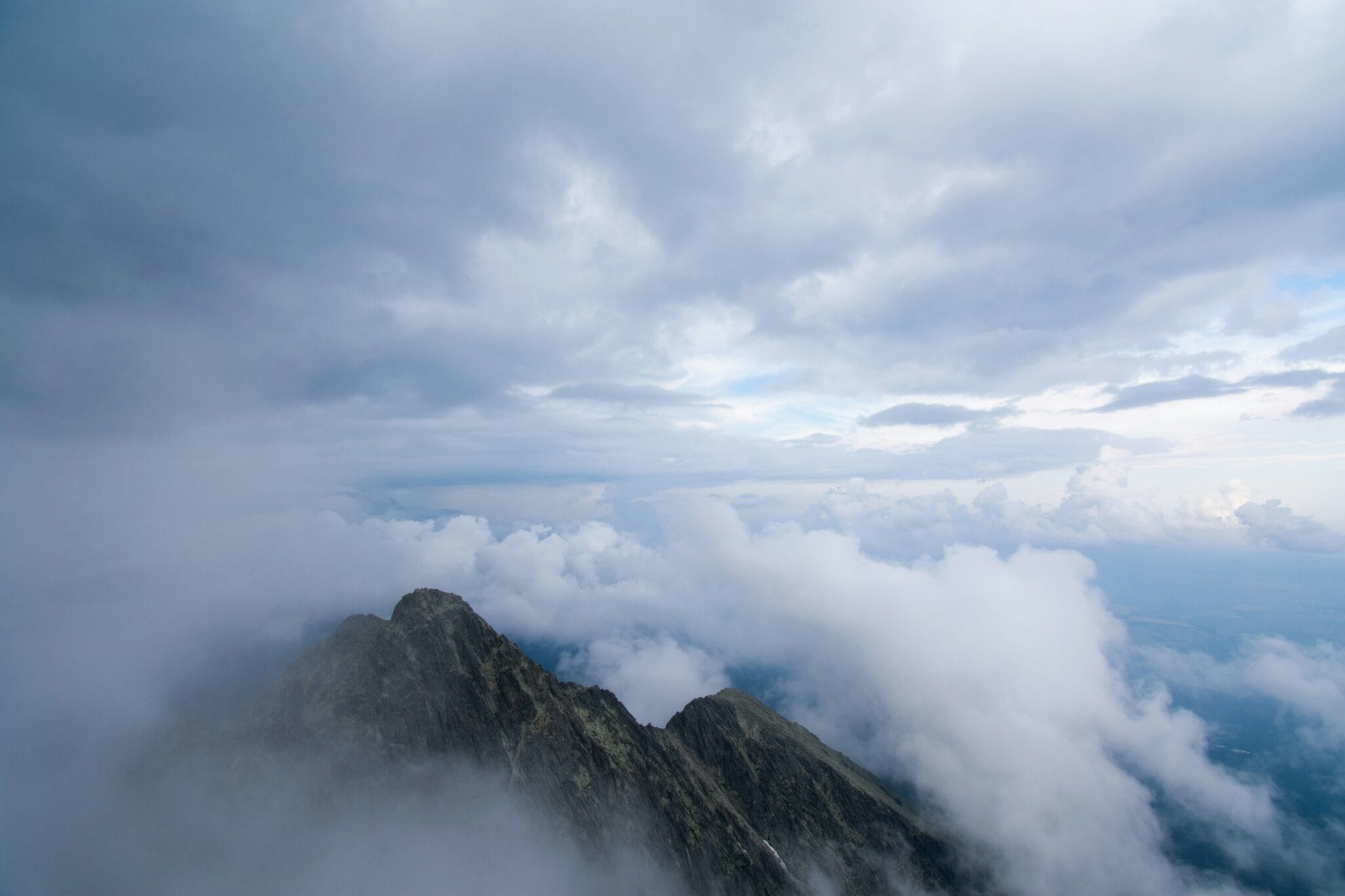
THE ATMOSPHERE OF THE UPPER-WORLD
When experienced in its own right, the Upper-World is not crowded or ornate. It is spacious, often layered like veils of sky within sky. Light here has substance — it seems to breathe. Colours tend toward the subtle: silvers, golds, pale blues, translucent pastels that shimmer rather than glow. Sound, when it comes, feels less like noise and more like resonance — tones, harmonics, chimes, and overtones that seem to pass through rather than around you.
ETHEREAL QUALITY AND LITTLE WILD NATURE
Relative to the shamanic Lower-World, which is the realm of nature, the Sacred Feminine, and of Mother Earth, the Upper-World carries a different balance. Although there are certainly feminine energies and beings there (which we may perceive as goddesses, Taras, and the like), the Upper-World is more aligned with the Sacred Masculine and with Father Sun. This is not an absolute distinction, but one of degree and emphasis.
While the Lower-World teems with nature in all its forms — the hundreds of thousands of different kinds of Animal, Plant, and Stone People — the Upper-World feels more rarefied. There are far fewer beings and much less nature, and what nature does appear is often more “formal” or symbolic. It may appear as immaculate gardens or empty mountain peaks rather than wild forests. Animals are rarer still, and those we do meet are often mythological or archetypal — dragons, pegasi, griffins, and so on.
Because of this, the Upper-World has an ethereal quality. Until we grow accustomed to it, it can feel vague or insubstantial — floaty, spacey, hard to grasp. Yet there is also an extraordinary quality to the light. Colours are luminous and delicate. The atmosphere carries a palpable sense of majesty and awe.
BUILDING HEAVEN
WE CREATE UPPER-WORLD BUILDINGS!
Because there is so much less substance in the Upper-World than in the other realms, we inevitably bring more imagery to it in order to perceive and make sense of it. We do this, often unconsciously, by drawing on the symbols, metaphors, and cosmologies that our culture associates with spirituality and transcendence. As a result, many people fill their Upper-World journeys with temples, cathedrals, monasteries, or fairy-tale castles.
Indeed, the great sacred buildings of the middle-world — cathedrals, temples, stupas, and mosques — are deliberate attempts to recreate a sense of the Upper-World here on Earth: to give form to transcendence, awe, and the experience of being in the presence of the divine. Likewise, much Renaissance and temple art seeks to depict Upper-World experience through the use of light or pastel tones, celestial beings, and figures floating on clouds, and so on.
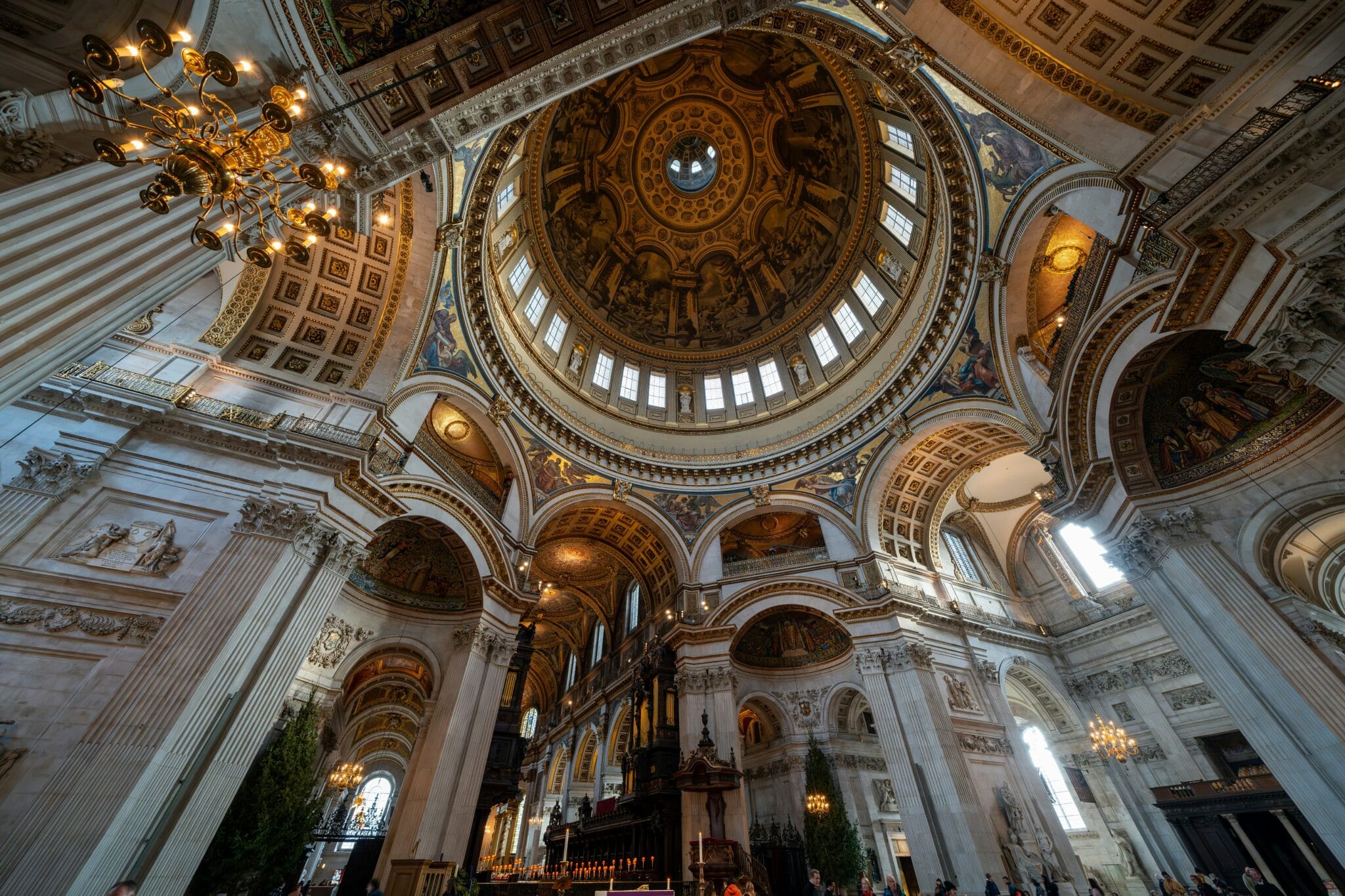
THIS CREATES PROBLEMS
When journeying in the Upper-World, it is vital to remember that much of what we experience there is not what is literally present, but what we bring to it so that our human minds can comprehend it. Otherwise, we risk mistaking our own symbolism and projections for the realm itself.
Most of the imagery people bring to their Upper-World journeys today arises from cosmologies that emerged after we began abandoning animism — whether Christian, Hindu, Buddhist, Kabbalistic, Druidic, Norse, New Age, or other systems. The problem being that such imagery (especially of gods, angels, or sacred symbols) carries a whole complex of stories, assumptions, and “spiritual” beliefs that are often profoundly at odds with original animist understanding.
From an animist perspective, much of what people today take to be the “Upper-World” is not that realm at all, but a human-made construct — a reflection of our own cultural imagination. For example, the Christian Bible says that “God” created us in his own image. Yet from an animist view, it is more accurate to say that in our fallen, modern-day cultures, we have created God — and the gods — in our own image.
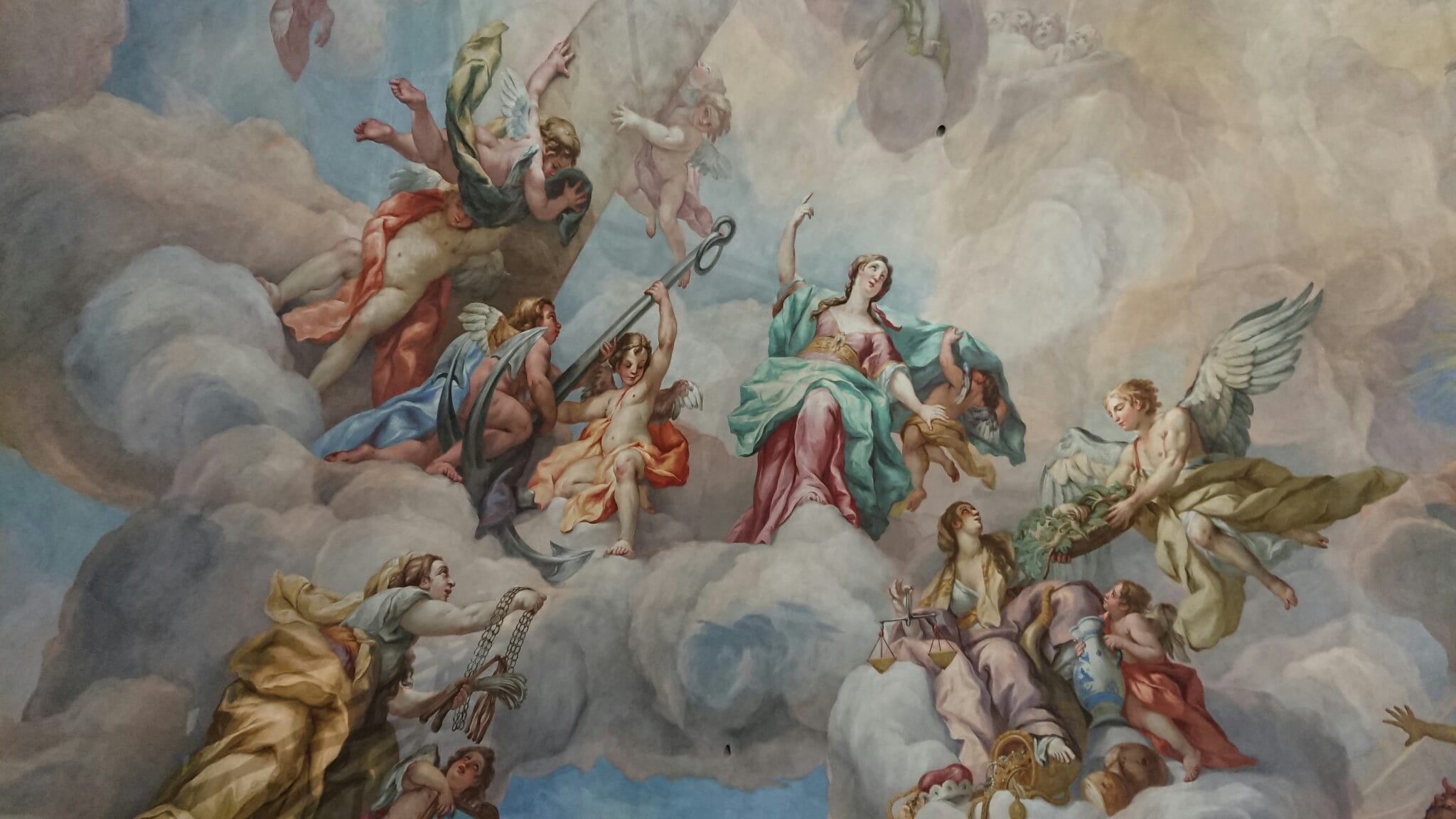
Because we now live in intensely hierarchical and patriarchal societies (compared to animism which is profoundly egalitarian and non-hierarchical), our spirituality reflects this imbalance. We have invented, and then come to belive, wonky ideas such as:
- The Upper-World is “better” than the Lower-World.
- Ascent is better than descent — as if higher piano notes were somehow better than lower ones.
- Humans are more spiritual than other animals.
- God is superior to Goddess.
- Men are closer to God than women.
All of which are deeply out of step with the animist worldview.
Tragically, this fallen, ungrounded, and hierarchical thinking is not limited to organised religion or the New Age (“New Cage”). It has also infiltrated much of contemporary shamanism, to the point where many forms of modern shamanic practice have become detached from their grounded animist roots.
The result is that, in abandoning animism, we have not only severed our connection with Mother Earth, nature, and the Lower-World — we have lost touch with the true Upper-World as well. Instead, we have become caught in a self-referential “spiritual” dream, an “Upper-World” of our own making.

SEEING THE UPPER-WORLD AS AN ANIMIST
If we are to rediscover the animist Upper-World, we need to strip away these modern-day human overlays and distortions, and learn to see it as it actually is. That means becoming aware of what imagery, beliefs and stories we bring to it and letting go of those. It means not trying to shape it into something familiar, but instead allowing it to reveal itself as it really is. When we do that, what we find is not the grandiosity of heaven, but a realm of clarity, spaciousness, and perspective. A place that helps us see through illusion, rather than escape from the world.
If we do that, if we are willing to decolonise our modern-day spiritual thinking, we can arive in the original, ancient, animist Upper-World.
There is little movement. Even when forms appear, they are gentle, deliberate, as if shaped by intention rather than by wind or gravity. Beings of the Upper-World, when they come, carry clarity rather than personality. They communicate through direct knowing more than words. The whole realm holds a feeling of still awareness — immense yet intimate.
Unlike the warmth and pulse of the Lower-World, the energy here is cool and lucid. It can feel vast, but not distant; serene, but not detached. In its presence, small concerns fall away, and what remains is simplicity. The sense of the sacred here is not sentimental — it is clear, radiant, and without ornament.
Those who travel here often speak of a feeling of recognition: as though this place has always been present behind the noise of thought. It does not pull us upward so much as open us outward, helping us to see from a broader horizon.

STAYING BALANCED
NOT A FORM SPIRITUAL BYPASSING!
There is a risk here, quietly seductive. In a world so marked by suffering — this hell-on-earth we have fashioned in the name of “civilisation” — the Upper-World can seem like refuge. Its lightness can lift us out of the body, out of the mess and ache of daily life, and into the cool safety of the mind. For a while, that can feel like relief. Yet if we linger too long, we begin to drift: ungrounded, translucent, reluctant to return. After touching that vastness, the temptation to stay — to build a life around “higher” experience — can be hard to resist.
Animism is never about escape; it is about balance and service. The Upper-World is not a refuge from connection or belonging, but a place of clarity and guidance.
The Upper-World brings perspective, the Lower-World brings belonging — and without one, the other becomes distortion. We rise not to leave the world behind, but to return to it refreshed, with clearer eyes.
After journeying there, it helps to do something simple and embodied — eat, breathe deeply, stretch, walk, speak to a tree, tend a task. This is not descent but balance: the act of bringing the worlds together in a healthy way. This is at the heart of animist and shamanic practice — not separating or trying to escape, but weaving the worlds together into a greater, living whole.
SOUL AND SPIRIT
To understand the Upper-World, it helps to remember the difference between Soul and Spirit.
Soul belongs to the Lower-World. It roots us in relationship — the felt web of kinship and connection with nature, the web of life, land, ancestors, and Mother Earth. It is deeply embodid and interconnected. Soul is the warmth of belonging, the ache of beauty, the pull toward meaning and purpose, the desire to be of service and find our place, and the urge to find ourselves and blossom into the person we are truly meant to be.
Spirit, by contrast, is the principle of clarity and vastness. It belongs more to the Upper-World. Spirit is not personal; it opens rather than binds. It offers broader brush-strokes than Soul. Things like perspective, lucidity, clarity, discernment and healthy detatchment, and the guidencne of ethics and right action.
If Soul is the roots of the tree, Spirit is its branches (and the middle-world the trunk that spans and connect the two). Our modern-day fallen culture, with its top-heavy and unbalanced thinking, tends to split Soul and Spirit It elevates Spirit as pure and eternal, while seeing Soul as heavy, flawed, or primitive. By conteast, animism holds them as two movements of one life. Spirit gives Soul its light and perspective; Soul gives Spirit its depth, embodiment and enrichment.
When we travel to the Upper-World, we are entering the realm of Spirit — not to escape the body or earthy life, nor to escape the world of Soul, but to remember how all belong together.
Spirit offers the broader vision, Soul offers the details, Body offers the vehicle. In this balance lies sanity.
Without Spirit, Soul lacks perspective and discernment. Without Soul and Body, Spirit becomes abstract and unhealthily detached from the living world. Without Spirit and Soul, Body becoems lost in the excesses of the material world. The work of an animist is bring all parts of us into a non-hierarchical, healthy balance; a healthy “inner tribe”.
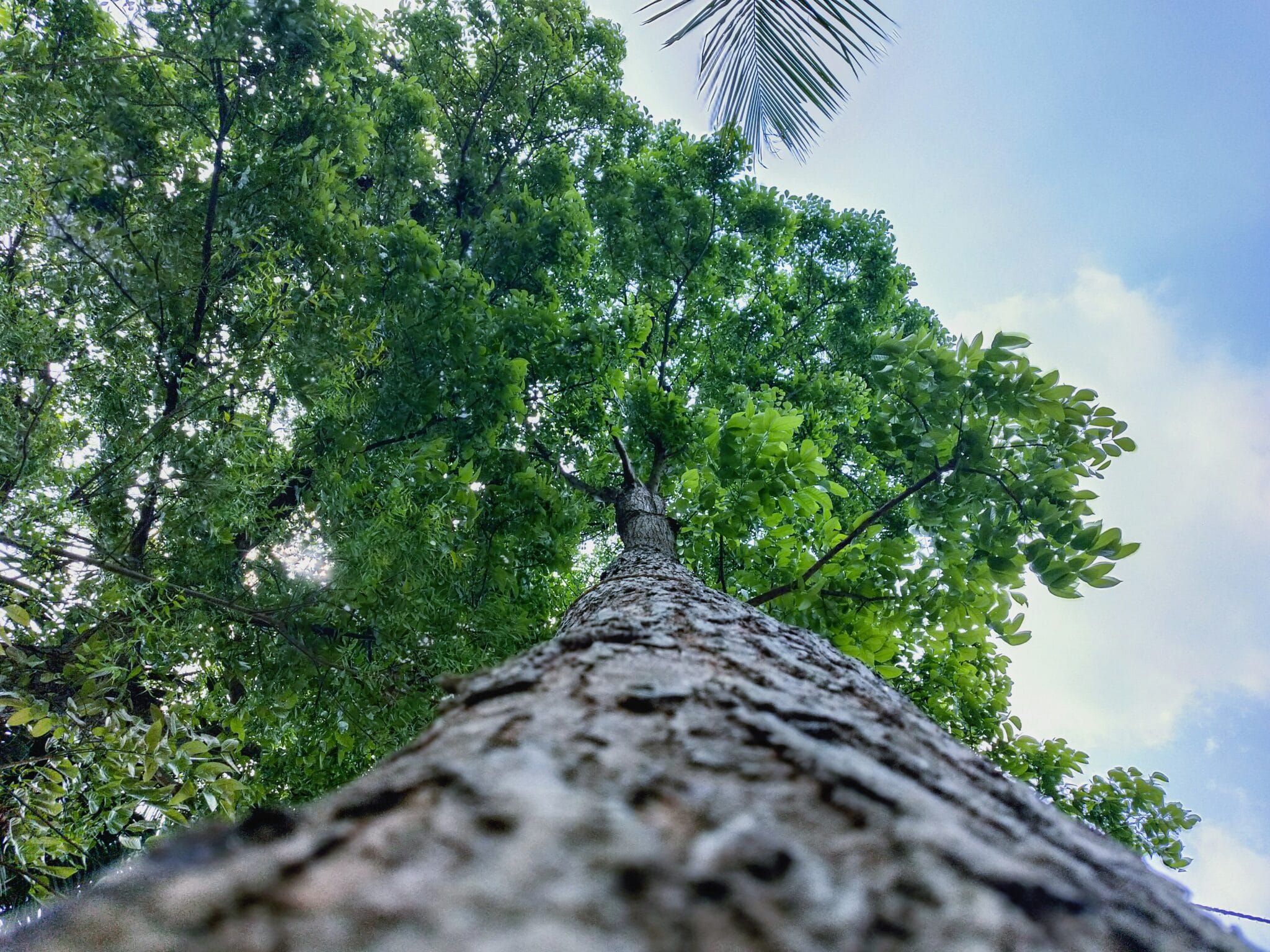
SACRED MASCULINE AND SACRED FEMININE
The same goes for how what we call the Sacred Masculine and the Sacred Feminine play out in us. These are not genders, but energies that we all have in us — complementary principles that together create balance.
The Feminine is the ground of being, the fertile darkness from which all form arises. It is cyclical, receptive, embodied — the pulse of belonging that says you belong, are loved, and are held. Its wisdom comes through stillness, through the body, through the patient knowing of the Earth.
The Masculine is the spark of consciousness, the clear light that gives direction and shape. It is spacious, illuminating, and outward-reaching — the impulse that says become, express, reveal. Its wisdom comes through clarity, discernment, and the courage to act.
Creation needs both. When they move together, life stays whole. The Feminine offers rootedness and relationship; the Masculine brings vision and purpose. Spirit and Soul mirror the same dance — light and depth, sky and soil, awareness and form.
When one pole is exalted over the other, as it is in our modern-era fallen culture, distortion follows. A culture that worships only light becomes brittle, hierarchical, and disembodied. A culture that forgets light sinks into stagnation and despair. The aim is not equality in sameness but equality in partnership — each in right relation to the other.
In contrast to much unbalanced fallen-era spirituality, animism, with is non-hierarchcal nature, holds this balance at its very centre. Upper-World work reminds us of the clear, spacious intelligence of the Sacred Masculine. The Lower-World roots us again in the fertile, embodied wisdom of the Sacred Feminine. The middle-world, where we live, is meant to be the meeting place between them — the bridge where Spirit and Soul can walk together and be expressed in our iives.
The use of the term "Upper-World" may create the impression that the Upper-World is superior to the Lower-World, thereby perpetuating the myth of human superiority, and wonky stories about hierarchy. Shamanism is a part of animism though, and in animism, there are no hierarchical judgments.
BUILDING A BALANCED SPIRITUAL PRACTICE
In contrast to much modern-day spiritual practices, animism is a balanced practice. It is not a top-heavy, disembodied, or ungrounded practice. instead, like a healthy tree, it has strong roots and strong branches. It values and works with the Lower-World and the Upper-World equally, and understands that both are necessary, and both are sacred.
In contrast to much modern-day spiritual practices, animism is a balanced practice. It is not a top-heavy, disembodied, or ungrounded practice. instead, like a healthy tree, it has strong roots and strong branches. It values and works with the Lower-World and the Upper-World equally, and understands that both are necessary, and both are sacred.
EVERYTHING IS SACRED – RISING ROOTED
UPPER-WORLD PRACTICES HELP US TRANSCEND OUR SENSE OF SEPARATION.
They help us move beyond our limited self and experience non-duality in the sense of everything being part of an undifferentiated whole. They can help us see the bigger picture, and gain perspective from the agendas and concerns of our ego and its stories and desires. Furthermore, they can help us align ourselves with good ethics, and in cultivating healthy detachment, discernment, compassion (including self-compassion), tranquillity, serenity, and living in the present moment.
LOWER-WORLD PRACTICES INVOLVE THE EQUALLY SACRED AND SPIRITUAL JOURNEY OF DIGGING DOWN AND DISCOVERING THE TRUE NATURE OF OUR SOUL.
The descent to the Lower-World can also help us move beyond the limitations of our middle-world self, and in finding our Soul (which is both in and of the Lower-World) become what we were truly meant to be. Then, we can finally take our unique and sacred place in the web of life. In doing so we realise that we are unique, loved by the world, and of value to it. At the same time comes the understanding that we are but a part of something vastly greater; a part of an immeasurably greater whole. Our Soul is both our place in the greater world and our gift to it. This gives us a healthy template to rebuild our middle-world self so that it becomes a vehicle for expressing our Soul in the world.
UPPER-WORLD AND LOWER-WORLD PRACTICES HAVE SIMILARITIES.
Both are transpersonal and transcendent. Both are outside of the limitations of the middle-world, of matter, and of space and time. Both take us far beyond our own ego and its limited concerns and understanding, and allow us to re-make our self/ego in such a way as to be of service to the world, and to express the sacred within it. In both practices, we find healing, endless love, and compassion. As such, it may seem that it does not matter which we choose, as both ultimately are just different ways to arrive at the same place.
BUT WHILE THEY ARE SIMILAR… THEY ARE FUNDAMENTALLY DIFFERENT TOO.
Yang is not the same as yin. Feminine is not the same as masculine. You cannot understand the feminine by spending your life focused entirely on the masculine (or vice versa). You cannot come to understand Goddess by steadfastly refusing to focus on anything other than God (just look around at patriarchal religions to see how that one has worked out!). You do not come to love and revere the Earth by resolutely ignoring her and focusing only on the Sky (look around at see how that one has worked out too, in terms of the human-created environmental apocalypse that we are now living in). We can never understand what is missing in us by continuing to ignore it. We can never be whole in that way. To be whole and healthy, we need Soul roots and Spirit branches, and we can never embrace and cultivate our Soul by focusing only on Spirit.
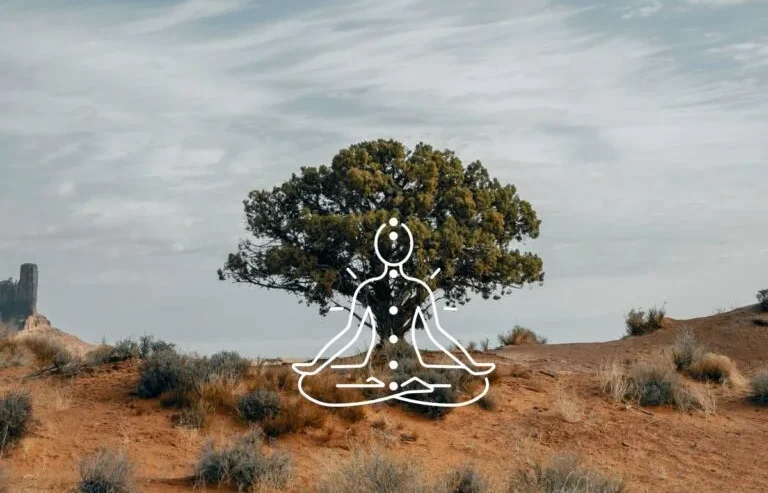
RISING ROOTED
True animist practice is never top-heavy. It does not reach for heaven while forgetting the soil. Like a living tree, it thrives through balance — Soul as roots, Spirit as branches. Each feeds the other. Together, they make wholeness.
In fallen culture, spirituality has often meant ascent: climbing toward purity, light, or transcendence. Animism remembers that growth also means descent — that we rise only through rooting. Both directions are sacred. The aim is not to escape the world, but to stand within it, alive and aware.
THE WORK OF SPIRIT
Upper-World practices help us move beyond the tight boundaries of ego and its stories. They lift our sight so we can see the wider weave — the patterns that link all beings and moments together. From this clarity grows discernment, compassion, and perspective. The light of the Upper-World teaches serenity, humility, and the calm joy that comes from knowing we are part of something immeasurably greater than ourselves.
This kind of transcendence does not erase difference; it helps us hold difference wisely. It dissolves the illusion of separation while leaving the beauty of diversity intact. It reminds us that oneness and diversity are not really opposites, but one truth seen from different sides.
THE WORK OF SOUL
Lower-World practices take us in the opposite direction — down into the fertile dark where our Soul waits. This is where we meet what is personal, particular, and embodied: our history, our wounds, our gifts. Descent strips away illusion not through distance, but through intimacy. We come to know the texture of our belonging, our kinship with the Animal, Plant, and Stone People, and the old truth that the Earth herself knows us, welcomes us, and loves us.
Here we find not abstraction but purpose. We discover that our Soul is both unique and relational — a note in the greater song of life. In living that note fully, we serve the whole. The middle-world self then becomes a vessel through which Soul can move — a way for the sacred to take form in daily life.
TWO PATHS, ONE WHOLENESS
Upper-World and Lower-World practices mirror each other. Both are transpersonal, both move beyond the confines of ego, both teach love and humility. Yet they do so in opposite directions — one through spaciousness, the other through depth.
Spirit shows us how everything belongs. Soul shows us where we belong. Spirit reveals the vast, unbroken field; Soul roots us in the particular place from which we give and receive. Neither is complete without the other.
Fallen culture has long mistaken light for wholeness, but the animist knows better: light without roots becomes glare. We heal by remembering both movements — the descent that makes us human, and the ascent that reminds us of the sacredness in all things.
To live this way is to rise rooted: clear without being detached, grounded without being heavy, a bridge between worlds that no longer competes but completes itself through balance.
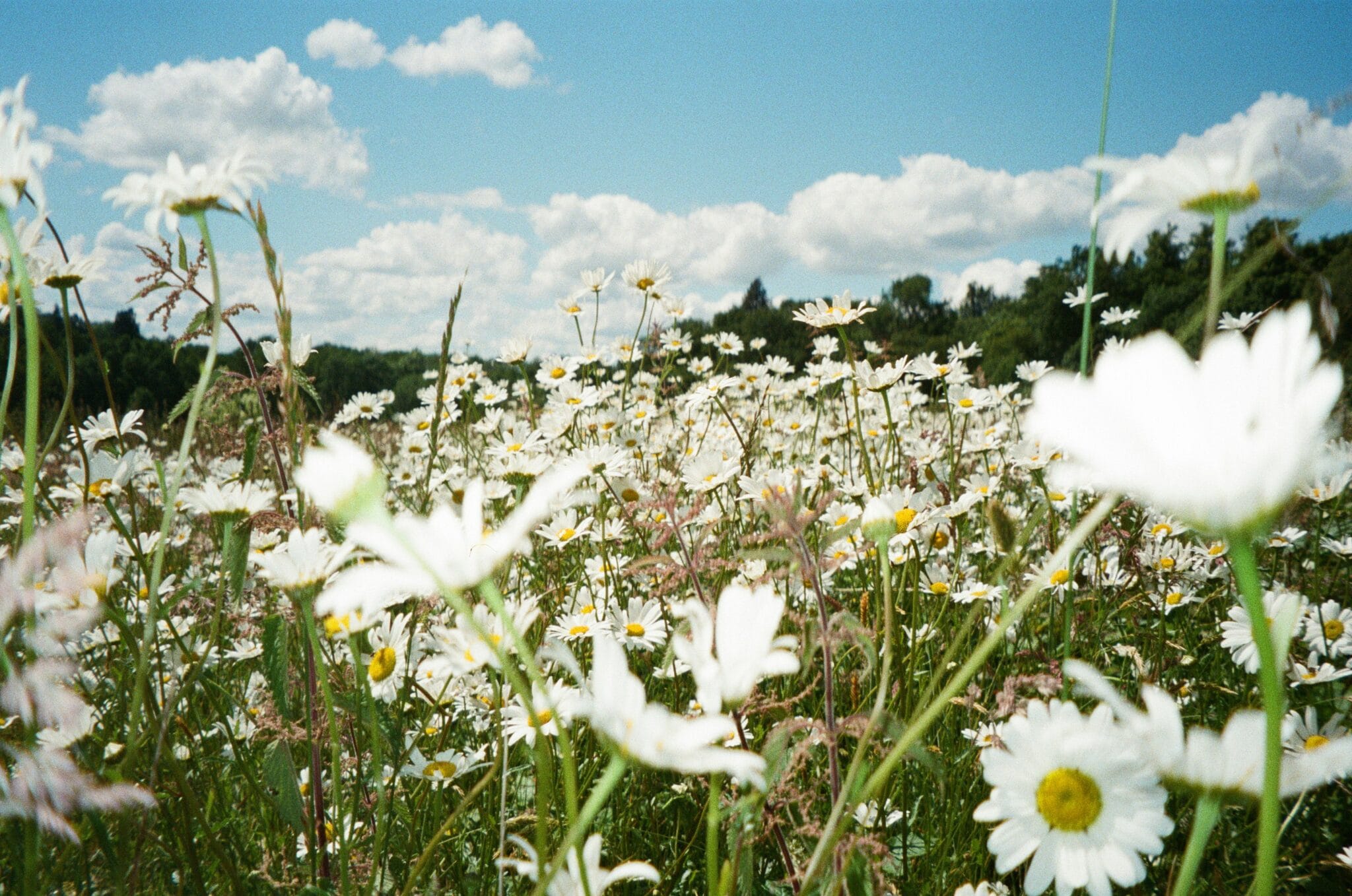
LIVING THE BALANCE
This balance only comes alive when it returns to relationship.
Every glimpse of Upper-World light is a gift meant to be brought home — offered back through kindness, craft, and care for the wider web. Vision becomes wisdom only when shared.
The middle-world is where this happens. It is where Spirit’s clarity and Soul’s depth meet daily life — in how we speak, eat, build, rest, and relate. To live animistically is to keep this conversation going: light informing matter, matter revealing light.
When the journeyer carries what is seen in the heights back down into the human world, reciprocity begins. Service is no longer duty but overflow — the natural return current of a balanced life.
BEING OF SERVICE
To walk this path is to keep tending both ends of the tree — the roots and the branches. Each journey, each act of awareness, becomes part of a wider restoration: the healing of the split between earth and sky, body and spirit, human and more-than-human.
The Upper-World does not ask us to rise above life, but to rise within it — to bring clarity into relationship and reverence into action. Each time we return from that realm with humility and put its light to work in the ordinary world, the balance deepens a little more.
This is how the world is remade: not through escape, but through presence. Rising rooted, serving life as kin among kin.
To become truly whole and balanced, we need to embrace both the Lower-World and the Upper-World, and both our Soul and our Spirit, in equal measure. As the wise Plant People teach us, we need to ascend rooted, and draw our nourishment equally from Father Sun and Mother Earth.
Unpacking Sky-Religion’s Influence
SHAPING OUR PERCEPTION: UP IS GOOD, DOWN IS BAD?
To develop a balanced shamanic practice, a balanced spiritual practice, it is important to take on board the sheer extent and depth to which our view of the lower-world and Mother Earth has become distorted. In modern times, in what the author and radical environmentalist Derick Jensen refers to as ‘the myth of human supremacy’, there is often an assumption that we are the pinnacle of evolution, the most highly evolved species.
Notice the language (most people do not)! Behind the words are a set of value judgements that, since the Fall and the rise of the sky religions, most people accept without question. As a culture we are so deeply steeped in these judgements that we generally do not even consciously notice them (let alone challenge or question them). They have soaked right into us, into the way in which we think and perceive the world, and into the language that we use. We take them for granted.
We use the word ‘higher’ to mean better than ‘lower’, as in ‘a higher state of consciousness’. We talk of ‘raising’ our vibrational energy, and to aim to resonate at a ‘higher frequency’ as if this is simply obviously a better thing. We talk about ‘ascent’ as if it is better than ‘descent’, as in the ‘ascent of humankind’ or a ‘descent into chaos and darkness’. Evolution is generally seen as an upwards movement — most drawings of evolution are of a tree with the most ‘evolved’ species nearer the top. We see ourselves as the pinnacle of evolution. We talk about arriving at a pinnacle as if it is somehow better or more desirable than arriving at the depths. Outside of depth psychology, ‘plumbing the depths’ is generally meant as a bad thing. Moving ‘up to the light’ is generally seen as better than moving ‘down into the darkness’. ‘Down’ is associated with ‘lesser’, ‘less evolved’, ‘darkness’, less ‘spiritual’ and even with hell itself. By contrast, ‘up’ is associated with ‘spiritual’, enlightenment, ‘light workers’, and even heaven itself.
Our modern, Fallen, left-brained culture sees the other-than-human Peoples as lesser. We are told that stones and plants do not have our ‘higher’ consciousness. In fact, we are told that stones have no consciousness at all. Our fellow animals are seen as less conscious than us, and so do not merit the same rights as us. We name our species ‘Homo sapiens’, which means ‘wise man’, the ‘pinnacle’ of the evolution of the Hominid genus. In fact, we even name modern-day humans ‘Homo sapiens sapiens’, wise wise man, to elevate our sub-species (that emerged somewhere between 50,000 and 30,000 BC) above our more ‘primitive’ human ancestors. We deem ourselves ‘above’ our earlier human ancestors, and above the rest of life. We talk of ‘animal nature’ as being ‘lower’. To say that someone is a ‘bit of an animal’ or ‘acting like an animal’ is an insult. Sky-religions tell us that animals are further from ‘god’ than us; that ‘god’ made us in ‘his’ own image and that, if we are to get close to ‘god’, then we must ‘transcend’ our animal nature and instincts and the earth itself. We are told that the lower-world is full of demons and pain, to scare us off from ever venturing there. We are told that this earthly plain is one of corruption and suffering, and that it is to be renounced and rejected. Anyone seeking out the Goddess is to be persecuted and even tortured and murdered (‘Thou shalt not suffer a witch to live’ – Exodus 22:18) all in the name of saving them, of course. Any knowledge about how to know the lower-world — shamanic journeying, power-plants, how to use the drum and the rattle, ecstatic dancing, and so on — is rooted out and destroyed. Anyone who has this knowledge is persecuted and killed with such a ruthlessness and dedication of purpose that, to all intents and purposes, we end up effectively eradicating shamanism in the West, leaving us with a broken lineage that we are only just now beginning to try and repair.
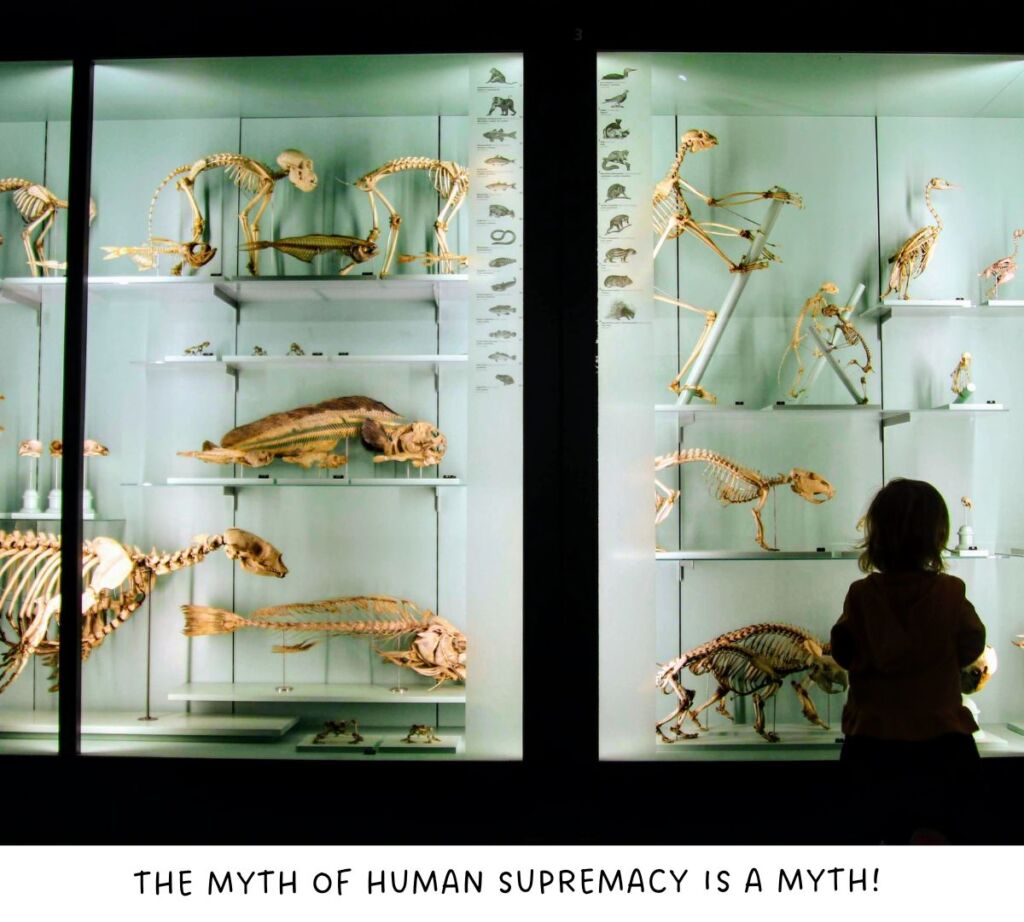
This notion that ‘up is good and down is bad’ is in many ways a spell, a curse even. To free ourselves from it we need to break its spell. Our recovery can begin with being aware of it and realising that it is simply not true.
Shamanism is an entirely non-hierarchical spiritually and way of looking at the world. It is entirely free of the idea that up is good and down is bad. In shamanism, the upper-world is not a better place than the lower-world. God is not superior to Goddess. Humans are not superior to animals. Animals are not superior to plants and stones. Everything is equal and deserving of equal respect, not just when journeying, but in day-to-day life.
LEARN TO JOURNEY IN THE UPPER-WORLD
FURTHER-STEPS COURSE:
EXPLORING THE SHAMANIC UPPER-WORLD
Spirituality, Mindfulness And Meditation Practices
The course will cover (amongst other things):
- Spiritual discernment. How to identify and let go of ungrounded, wonky, fallen-culture “spiritual” thinking, and what original animist spirituality looks like instead.
- The difference between gods and goddesses on the one hand, and Gods and Goddesses on the other. How to find true, animist Upper-World Guides.
- Finding your Upper-World “Self” or “Spirit”.
- How the Upper-World can help you develop healthy perspective and detachment (and how to stay grounded whilst doing this).
- Upper-World healing practices, including the use of shamanic light, song and sound in shamanic journeys.
- Upper-World places of convalescence and healing.
- The “Council of Elders” and its role in the removal of entanglements, unhealthy contracts, and “curses”.
- Honouring of both the Sacred Masculine and the Sacred Feminine.
- Healing our Mother wounds and our Father wounds.
- How to incorporate meditation and mindfulness practices into shamanism, and how to integrate shamanism into your meditation and/or mindfulness practices too.
… and much more too!




